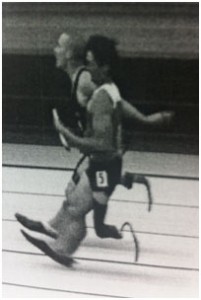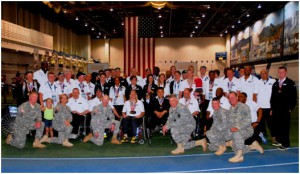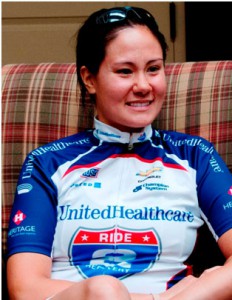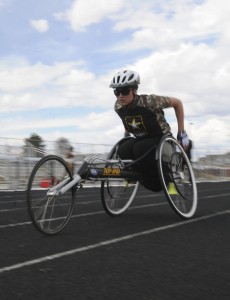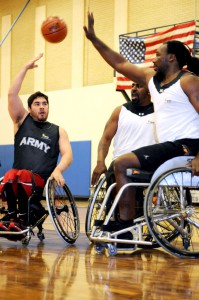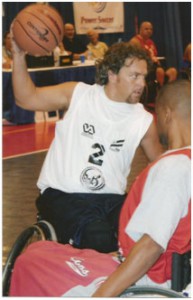By Amanda Koons, WTC Communications Division
Did you know that adaptive reconditioning contributes to a successful recovery for Soldiers, whether they are transitioning back to active duty or to civilian life? Adaptive reconditioning includes activities and sports that wounded ill and injured Soldiers participate in regularly to optimize their physical, cognitive and emotional well-being.
You may already know a lot about adaptive reconditioning. You may have even participated in one of WTC’s Warrior Games training and selection clinics. In fact, adaptive sports is one of the most highly featured topics on the WTC blog with 111 posts, including coverage of Warrior Games since 2010. You can read past blog posts by clicking “Adaptive Sports” on the right hand side of the page.
What you may not know is how adaptive reconditioning plays an important role in the six domains of the Soldier’s Comprehensive Transition Plan (CTP). The CTP supports Soldiers with personalized goals in six areas: career, physical, emotional, spiritual, social and Family. Adaptive reconditioning connects activities and sports with each of the six CTP domains. One adaptive reconditioning event at a WTU may positively support goals in different domains for different Soldiers. Let us know what you learned in the comments section below.
Career – Adaptive reconditioning supports career goals by helping Soldiers build the confidence and self-esteem necessary to develop their career. Adaptive reconditioning may also provide opportunities to network and meet people with shared knowledge and goals. Finally, adaptive reconditioning may open doors to internships, shadowing opportunities, certified educational courses and activities that assist with promotion points.
Physical – Adaptive reconditioning supports physical goals through physical reconditioning based on guidance from the Adaptive Reconditioning team and WTU physical therapist. Competition is available through the Warrior Games, Endeavour Games, Valor Games, National Wheelchair Games and many other high level competitive events.
Emotional – Adaptive reconditioning supports emotional goals by building self confidence and helping Soldiers heal emotionally. Activities such as fishing, horseback riding, music and art provide Soldiers with a calm arena to recover.
Spiritual – Adaptive reconditioning supports spiritual goals by assisting Soldiers in strengthening a set of beliefs, principles or values that sustain and provide resiliency to a person.
Social – Adaptive reconditioning supports social goals through team building, developing leisure skills and exploring new communities. Programs in wheelchair basketball, sitting volleyball, water polo and track relays are great at team building.
Family – Adaptive reconditioning supports Family goals by building stronger Family bonds if Family members are able to participate and develop new skills that they can use as a Family group. Adaptive Reconditioning can introduce Soldiers and their Families to new activities or a new way to enjoy a past activity.
“Did You Know?” Series
Using your feedback, the WTC Communications Division identified five topics where wounded, ill and injured Soldiers, Families and Cadre want additional information, particularly around Warrior Care and Transition Program (WCTP) resources, benefits and policies that impact their recovery and transition. We’ll post one blog per week on these five topics throughout our “Did You Know?” blog series during Warrior Care Month:
1) Special Compensation for Assistance with Activities of Daily Living (SCAADL)
3) Internships
5) Transition Coordinators
Is there another topic you want us to cover in the future? Want to share your adaptive reconditioning story? Post a comment here or email us at usarmy.pentagon.medcom-wtc.mbx.strategic-communications@mail.mil.


